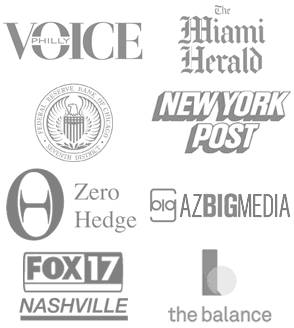In the ever-evolving world of home financing, the Fixed Rate HELOC has emerged as a game-changer for homeowners and investors looking to tap into their equity with predictability and control. While the traditional home equity line of credit are known for their variable rates and fluctuating payments, a fixed rate HELOC offers the stability of consistent interest and repayment terms—making it increasingly popular in a high-rate environment.
Fixed Rate HELOC Loan Guide 2025: Everything You Need to Know
In this guide, we’ll answer key questions about fixed rate HELOCs, highlight real-life case studies, and show why choosing a fixed rate could be the smartest financial move you make this year.
The RefiGuide will help you understand the pros and cons of fixed rate HELOC loans while securing the path the shop HELOC lenders offer competitive interest rates and terms.
Whether you need quick cash to consolidate debt, pay for home remodeling or to buy an investment property, we can help you find the home equity line of credit that best meets your needs.
-
Best Fixed Rate HELOCs
-
Top Lenders for Fixed HELOC Rates
-
Fixed HELOC for Renovations
-
HELOC with Fixed Term Repayment
What Is a Fixed Rate HELOC?
A fixed rate HELOC is a home equity line of credit that allows borrowers to lock in a fixed interest rate on a portion (or all) of the balance they draw from the line. Unlike traditional HELOCs, which have variable rates tied to the prime rate, a fixed rate option provides predictable monthly payments over a set term—similar to a home equity loan.
This structure is ideal for borrowers who want to avoid the uncertainty of rising interest rates and prefer consistent payments.
Can a HELOC Have Fixed Rates?
Yes, many lenders now offer fixed rate options within HELOCs. This feature is often called a “rate lock” or “fixed-rate conversion option.” Instead of being stuck with a variable rate that can increase at any time, you can lock in a fixed rate for specific draws from your HELOC—often for a period ranging from 5 to 20 years.
Some lenders even allow you to lock in multiple fixed rate portions at once, offering flexibility and security tailored to your needs.
Can You Get a Fixed Rate HELOC in 2025?
Absolutely. In 2025, more lenders than ever are offering fixed rate HELOCs in response to rising interest rate volatility. These products are now widely available through:
-
National and regional banks
-
Credit unions
-
Online mortgage lenders
-
Specialized equity loan providers
The fixed rate HELOC has become especially attractive for those planning major home renovations, consolidating high-interest debt, or needing access to funds with the security of a stable repayment plan. The RefiGuide can help shop for the best HELOC lenders online.
Who Offers Fixed Rate HELOCs?
As of 2025, many of the best fixed rate HELOC lenders include:
-
Bank of America – Offers fixed-rate conversion options on existing HELOC balances.
-
Wells Fargo – Allows multiple fixed-rate balances with flexible terms.
-
PNC Bank – Offers a competitive fixed-rate lock program.
-
Citibank – Known for tiered rate lock options and easy online management.
-
U.S. Bank – Provides fixed rate HELOCs with various draw options.
-
Third Federal – Specializes in fixed rate equity lines with long-term stability.
-
Figure – A fintech lender offering fast funding and fixed rates.
-
PenFed Credit Union – Offers fixed rate home equity loans with HELOC-like features.
-
TD Bank – Features a rate lock option and interest-only or amortized payments.
-
KeyBank – Known for competitive fixed rates and transparent terms.
Always check current offers for the best HELOC rates and terms directly, as rates, fees, and loan limits can vary by location and borrower profile.
Is HELOC Repayment Period a Fixed Term?
Yes—and no. It depends on your lender and the structure of your HELOC.
A traditional HELOC has two main phases:
1. Draw Period (typically 5–10 years)
During this phase, you can borrow funds, repay them, and borrow again—like a credit card. Most draw periods require interest-only payments on the amount you’ve drawn.
2. Repayment Period (typically 10–20 years)
When the draw period ends, the repayment period begins, and you can no longer borrow funds. At this point, you start paying both principal and interest, usually in fully amortized monthly payments.
If you opted for a fixed rate HELOC, the repayment term on the locked portion is often a fixed term, such as 5, 10, or 15 years—providing consistent monthly payments.
Case Study 1: Homeowner Uses Fixed Rate HELOC for Renovations
Background:
Sarah and Mark, a married couple living in Portland, Oregon, wanted to renovate their outdated kitchen and bathrooms. With a home value of $600,000 and a remaining mortgage of $340,000, they had enough equity to qualify for a HELOC.
Challenge:
They were concerned about rising interest rates and didn’t want the unpredictability of variable-rate payments over time.
Solution:
They applied for a $100,000 HELOC with a lender that offered fixed rate conversion options. At closing, they locked in $80,000 at a fixed rate of 7.25% over 15 years for the renovation. The remaining $20,000 was available as a variable-rate line of credit for future needs.
Result:
With stable payments of around $734/month on the fixed portion, they completed their remodel stress-free, knowing exactly what they owed each month. The remaining line served as an emergency reserve.
Takeaway:
For homeowners like Sarah and Mark, a fixed rate HELOC eliminates the guesswork and helps keep renovation budgets under control.
Case Study 2: Real Estate Investor Consolidates Debt with Fixed HELOC
Background:
James, a real estate investor based in Phoenix, owned a rental property with significant equity but carried $40,000 in high-interest credit card debt and a $25,000 personal loan at 12%.
Challenge:
Variable-rate HELOCs made him nervous in the current market, especially with rates on the rise. He wanted a predictable repayment plan to manage his investment cash flow.
Solution:
James chose a fixed rate HELOC and locked in a $75,000 draw at 8.00% interest over 10 years. His monthly payment of about $909 included both principal and interest, and was much lower than the combined payments on his high-interest debts.
Result:
By consolidating into a fixed rate HELOC, James streamlined his cash flow, increased rental property profitability, and reduced his financial stress. Plus, the interest on the HELOC may be tax-deductible because the funds were used for investment property purposes (consult a tax advisor).
Takeaway:
A fixed rate HELOC can be a powerful debt consolidation tool for investors looking to stabilize monthly payments and free up capital.
Why Choose a Fixed Rate HELOC?
Imagine driving down a winding mountain road in a car with faulty brakes—that’s what a variable rate loan can feel like in a volatile market. You’re constantly checking the slope, the speed, the risk. A fixed rate HELOC, in contrast, is like driving with cruise control—smooth, stable, and stress-free.
Benefits:
-
Predictable monthly payments
-
Protection from rising interest rates
-
Flexible draw and repayment options
-
Multiple fixed-rate lock options with some lenders
-
Ideal for large, planned expenses or debt consolidation
How to Qualify for a Fixed Rate HELOC
While each lender has specific criteria, here’s what most look for:
-
Good to excellent credit (680+ preferred)
-
Stable income or documented assets
-
Sufficient home equity (usually 80–90% CLTV max)
-
Consistent payment history on mortgage or debts
-
Debt-to-income ratio under 43%
Providing full financial documentation may increase your chances of qualifying for the best rates.
Fixed Rate HELOC vs. Home Equity Loan
| Feature | Fixed Rate HELOC | Home Equity Loan |
|---|---|---|
| Rate Type | Fixed (for locked portions) | Fixed |
| Structure | Revolving line of credit | Lump-sum loan |
| Draw Period | Yes (5–10 years) | No |
| Repayment Term | Fixed per draw | Fixed |
| Flexibility | High | Low |
| Best For | Ongoing expenses | One-time large expenses |
If you’re unsure whether a fixed rate HELOC or home equity loan is right for you, compare them side-by-side using your project’s cost and cash flow needs.
Frequently Asked Questions for Fixed HELOCs
Can a HELOC be entirely fixed rate?
Some lenders allow you to convert your entire HELOC balance into a fixed rate, but others offer only partial conversion. Always check the terms.
Can I refinance into a fixed rate HELOC?
Yes, some lenders offer HELOC-to-HELOC refinance options, where you can roll your balance into a new fixed-rate line with better terms.
Is the interest on a fixed rate HELOC tax-deductible?
In many cases, yes—but only if the funds are used to “buy, build, or substantially improve” the home securing the loan. Always consult a tax professional.
Is a Fixed Rate HELOC Right for You?
If you value predictable payments, long-term budgeting, and protection from rising interest rates, a fixed rate HELOC may be the perfect solution. In 2025, more lenders than ever offer flexible fixed-rate options, giving borrowers the tools to manage equity with control and confidence.
Whether you’re planning a remodel, consolidating debt, or funding an investment, the fixed rate HELOC combines the flexibility of a line of credit with the stability of a fixed-rate loan—the best of both worlds.
Don’t let rate uncertainty derail your goals. A fixed rate HELOC can be your financial cruise control.

